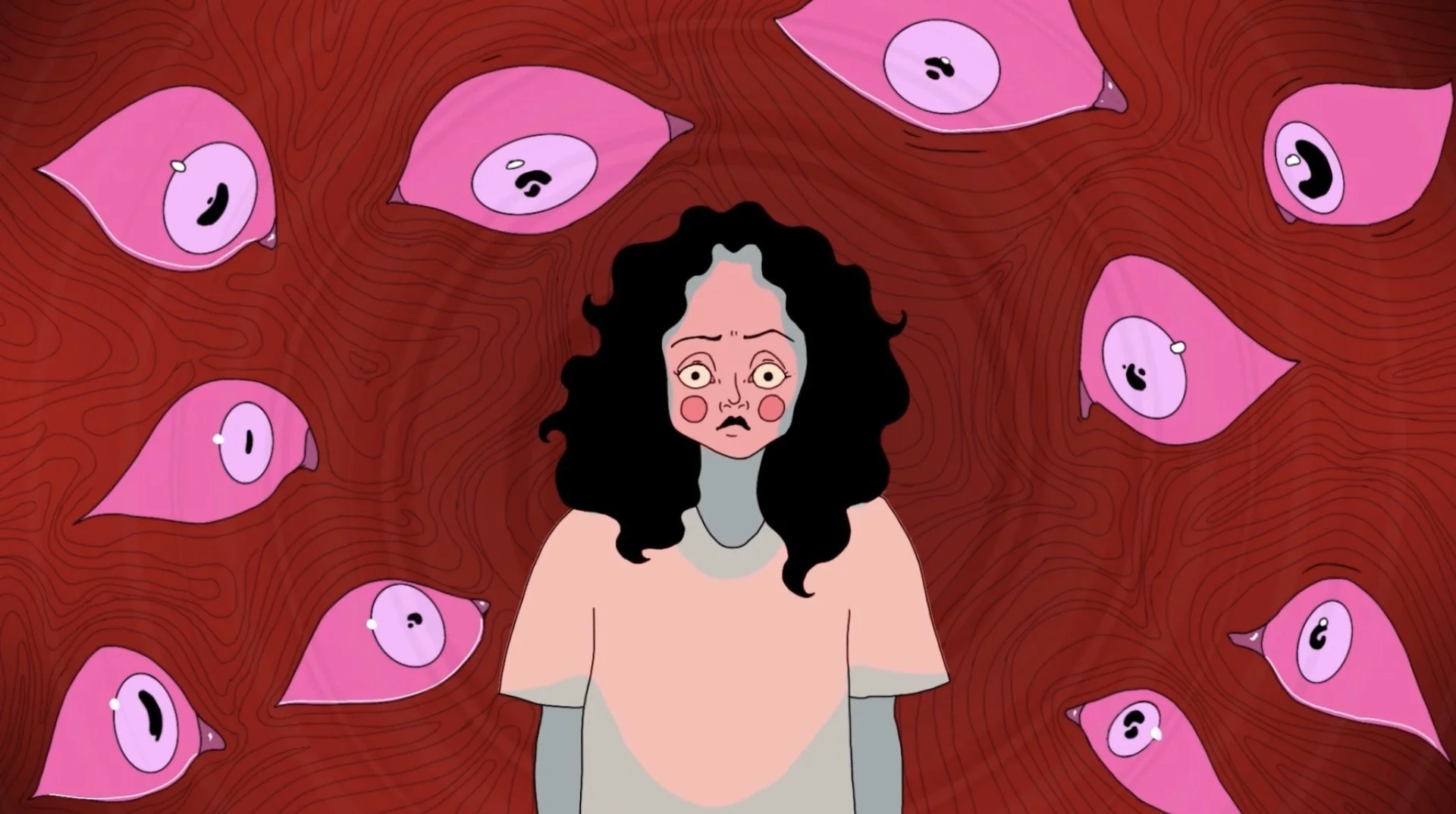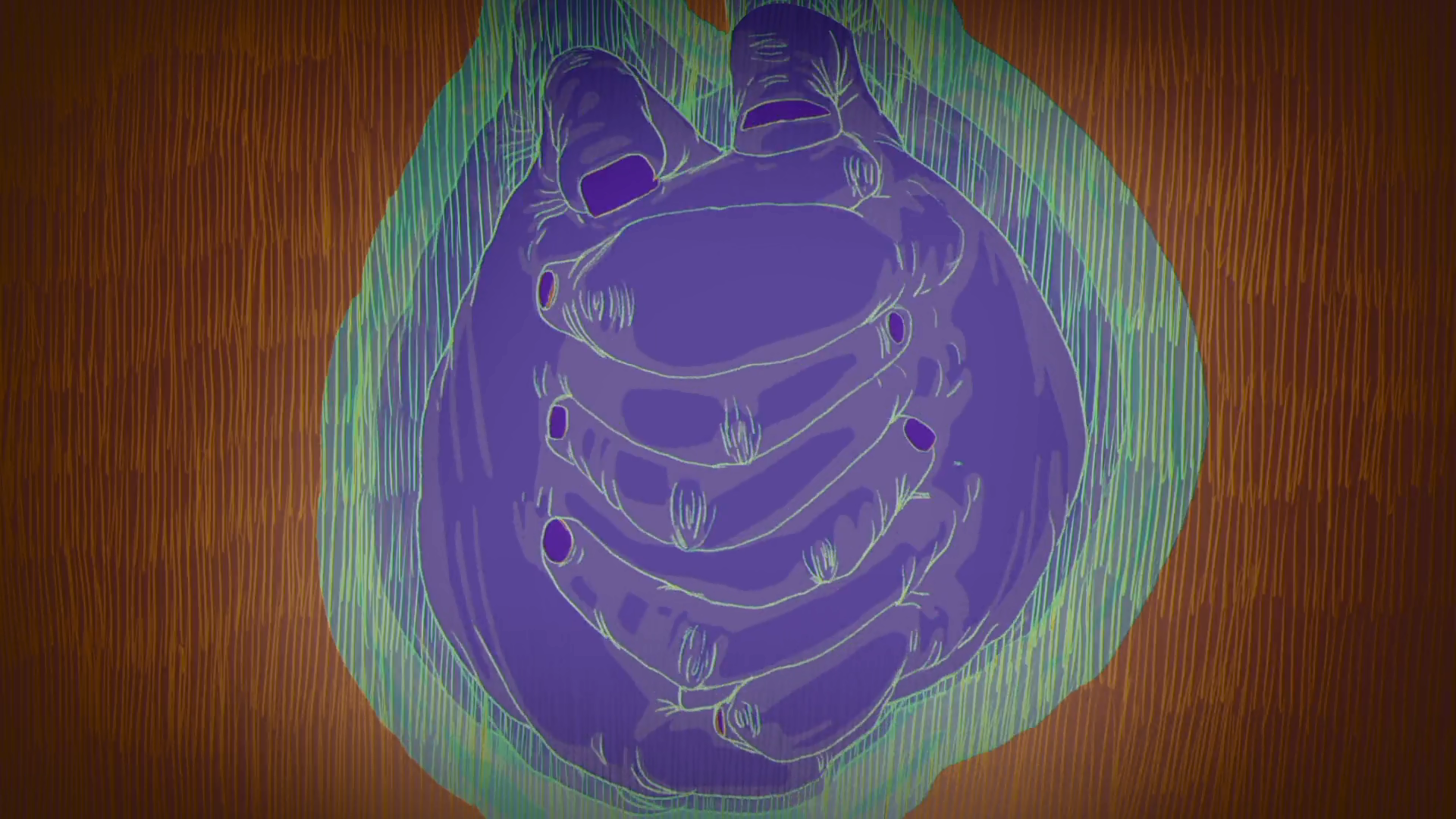The Waltz
Directed & Composed by LEONOR CALAÇA
United Kingdom, 2021
Experimental
A metaphorical dance between life & death.
Read our interview with Leonor below to learn more about the film.
LEONOR CALAÇA
Est. Reading Time: 5 Minutes
MARK (M) Tell us a little about yourself - when did you become interested in film and filmmaking?
LEONOR (L) Films, especially animated features have always been a part of my life as I grew up watching a lot of television and DVDs. I became very interested in films because they tell stories, I had characters and stories inside my head so watching films fed my imagination and creativity.
M Why are you interested in making films?
L I only realized I could actually make films a few years ago after changing my mind about what I should pursue in school. I entered the art world and came to the conclusion that I love music, drawing and storytelling so the best way to join and use them together was through making animated and live-action films.
On Danse Macabre
M Please tell us a little about the film’s inspiration - when did you come across Camille Saint-Saëns and his symphonic poem ‘Danse Macabre’? And why were you interested in turning it into a visual piece of art?
L Music is very important for me. I’ve played piano for more than 10 years now and I compose songs, mainly emotional and melancholic scores. As ‘Danse Macabre’ is one of my favourite classical pieces, I looked into it and found out that it is based on an artistic European medieval allegory about death. In the piece, death is represented as a skeleton that dances with the living. The song inspired the film idea because it made me picture a skeleton dancing with a living human, and the human getting older and older as they waltz passionately in a ballroom lit by candlelight. It was a very strong visual idea that I had in mind so I couldn’t help but want to bring it to life.
On Visual Style
M It would be great to learn more about your approach to colour design as I really liked seeing the contrast between the bright gold/yellow and dark black on screen. Please tell us about your ideas and thoughts behind using bright enveloping yellows throughout the film - did you use yellow to essentially represent light and life?
L The glow was initially developed to make the characters look more appealing and ethereal. After finishing the backgrounds and editing everything, I decided I wanted to use the light with more purpose. So just like you suggested, the light does represent life and its presence on the ballroom. The light switches between yellowish to blue tones, the yellow light gets more intense as the dance reaches its peak. When life (represented by the woman) gets old and starts dying, the light fades away and turns blue, life loses its own glow and death shines brighter. Lighting ended up being very important in making the film more atmospheric I think. The characters’ colour palette was more of a personal choice, but I tended to pick soft colours that go well together.
M And I really liked the dance sequence, it’s quite romantic and sweeping at times. Please tell us about the process of designing this sequence - how long did you spend choreographing and composing the dance on screen? And did you look at any particular dance sequences for inspiration?
L I was told to not bend the storyline to the music score I was composing for the film, so I picked key moments and dance moves that I liked and wanted to animate. I used waltz demonstration videos on YouTube as reference material and took inspiration from some period films and television series like Penny Dreadful (2014-2016). After refining my storyboards, I started to elaborate more on the piano score so the song follows what is happening on screen. Composing my own musical score enabled me to work in more depth and make it just as emotional as the story.
My initial idea was to make life and death start with basic moves like placing their feet correctly, swirling around and then having them develop the dance naturally. The waltz gets more intense and fast, almost dizzy-like. It took me around 4-5 weeks to finish the line art animation.
‘I became very interested in films because they tell stories, I had characters and stories inside my head so watching films fed my imagination and creativity’
— Leonor Calaça
On Process & Discovery
M In making and finishing the film, what did you discover and learn that you might adopt or further explore in future projects?
L I want to work on more expressive characters since the ones I developed in The Waltz are somewhat subtle. I also want to explore different animation and illustration styles while mainly focusing on 2D hand-drawn animation.
On Inspiration
M What are some of the films and who are some of the filmmakers that inspire you, and why?
L Some of the filmmakers that inspire me are Tim Burton, Hayao Miyasaki and Guillermo del Toro. I love the stories they tell in their films and their overall aesthetic. Some of my favourite films are horror movies like Black Swan (2010), Sleepy Hollow (1999) and Mother! (2017). I love Encanto (2021), Spirit (2002) and Howl’s Moving Castle (2004) as animated films. These and many other films make me feel happy, I don’t think I could live without the art of filmmaking. Films help me to have more story ideas and develop my style.
Black Swan (2010) by Darren Aronofsky
Mother! (2017) by Darren Aronofsky
On The Future
M I know your goals might change and grow over time, but what are your current goals in filmmaking?
L I believe my main goal now is to tell new stories, bring my characters to life and make relatable and striking films.
Leonor’s New Film Selva (2022)
M What are you planning to make next?
L I am working on another film for a university project. It is about mental health struggles in general but it is centered on a girl having a morning existential crisis.
Leonor’s New Film Selva (2022)
Leonor’s New Film Selva (2022)
Mark’s Final Thoughts
Pleasantly surprised to find out that Leonor composed the score for The Waltz - the triple-threat talents of animating, composing and filmmaking are very impressive and place her in a fantastic position to create really unique projects.
Great to learn a little more about Leonor's symbolic approach to the film's colour and lighting - capturing the essence of life and death through luminosity is relatively simple but very effective.
Leonor watching waltz videos on YouTube reminds me of Reinis mentioning the importance of Google searching basic behavioural and habitual phrases in the conception of his film. I always find it interesting when filmmakers share very idiosyncratic insights about their filmmaking process, especially when it involves platforms and websites like YouTube.
And I’m excited to follow her new project - the stills look terrific! Click here to see more of Leonor’s illustrations and creative projects.
Tags Animation Bourgeon Colour Death
The founder of Hommage, Mark Shaba published this interview on 10.05.2022. Mark is a grassroots filmmaker from Victoria, Australia. He respectfully acknowledges the past and present traditional owners of the land on which he creates, promotes and screens art, the Wurundjeri people of the Kulin nation who are the custodians.




























